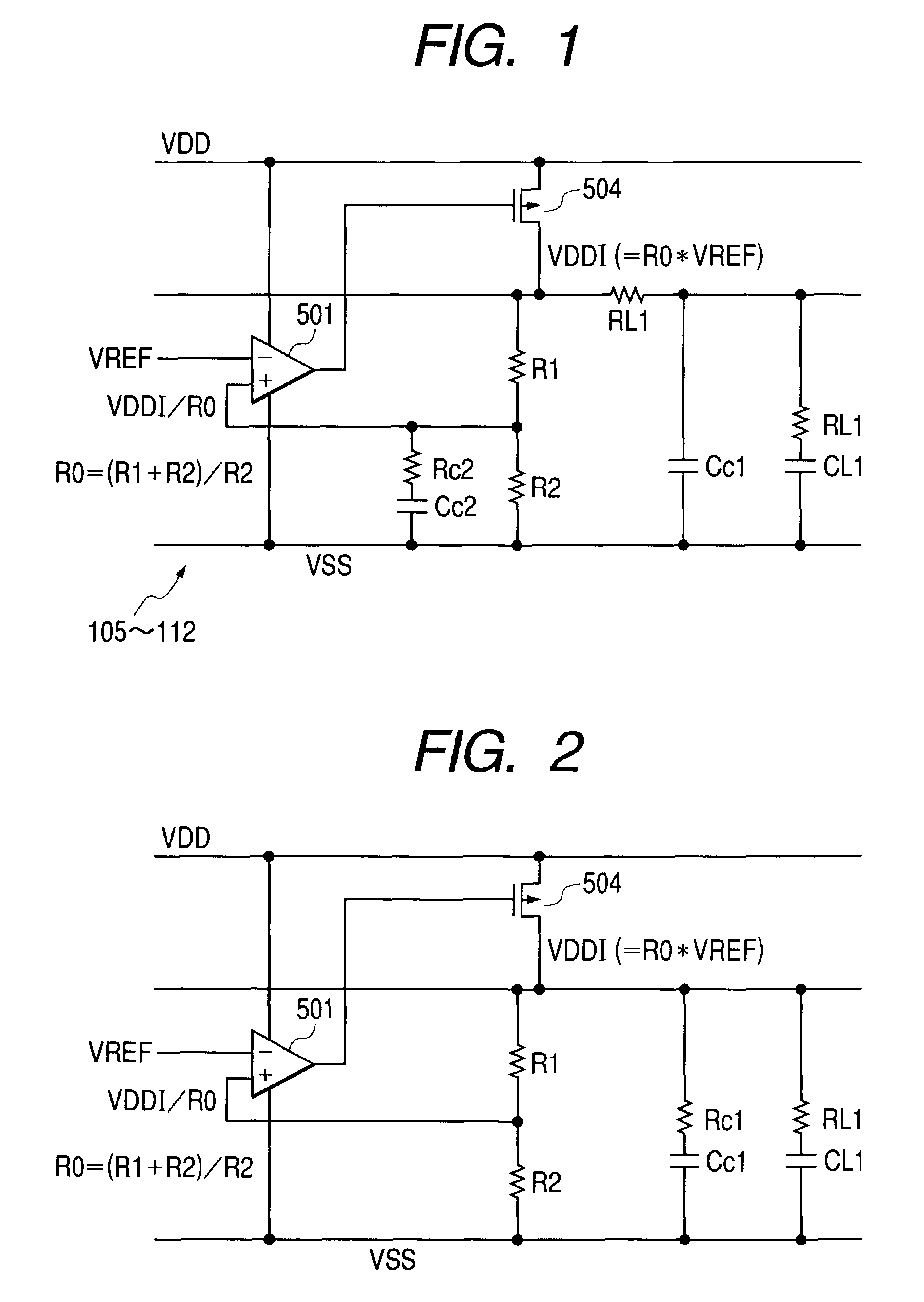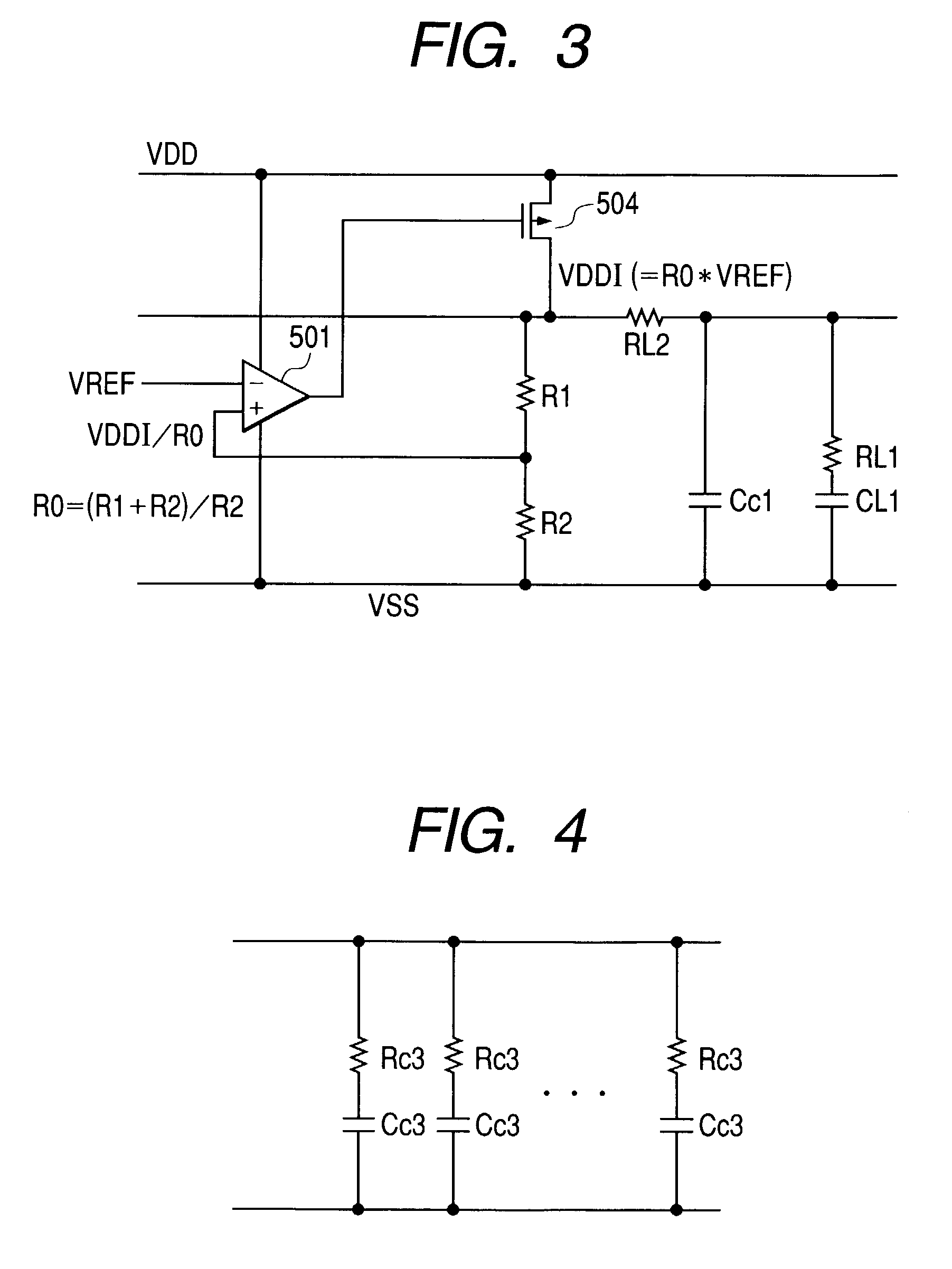Semiconductor integrated circuit device
a technology of integrated circuits and semiconductors, applied in the direction of electric variable regulation, process and machine control, instruments, etc., can solve the problems of reducing the drain conductance of the driver pmos, hindering appropriate phase compensation, and lowering the composite resistance, so as to reduce the chip occupancy area and the phase margin is sufficient. , the effect of reducing the chip occupancy area
- Summary
- Abstract
- Description
- Claims
- Application Information
AI Technical Summary
Benefits of technology
Problems solved by technology
Method used
Image
Examples
Embodiment Construction
[0047]FIG. 10 illustrates an SRAM (Static Random Access Memory) as an example of the semiconductor integrated circuit device according to the invention.
[0048]The SRAM 2 is assumed to be a flip-chip type, which is not limited to this. The SRAM 2 has a BGA (Ball Grid Array) substrate connected on a semiconductor chip 20. The semiconductor chip 20 is formed on a semiconductor substrate such as a single crystal silicon substrate by means of the known production technique for the semiconductor integrated circuit. The BGA substrate has the BGA balls as the external terminals that permit electrical connections to a component mounting board and so forth. The semiconductor chip 20 and the BGA substrate are electrically connected by way of bump electrodes.
[0049]The semiconductor chip 20 has memory cell arrays 101, 102 formed with two partitions divided in the latitudinal direction. A central circuit area 125 is allocated between the memory cell arrays 101, 102. The memory cell arrays 101, 102...
PUM
 Login to View More
Login to View More Abstract
Description
Claims
Application Information
 Login to View More
Login to View More - R&D
- Intellectual Property
- Life Sciences
- Materials
- Tech Scout
- Unparalleled Data Quality
- Higher Quality Content
- 60% Fewer Hallucinations
Browse by: Latest US Patents, China's latest patents, Technical Efficacy Thesaurus, Application Domain, Technology Topic, Popular Technical Reports.
© 2025 PatSnap. All rights reserved.Legal|Privacy policy|Modern Slavery Act Transparency Statement|Sitemap|About US| Contact US: help@patsnap.com



